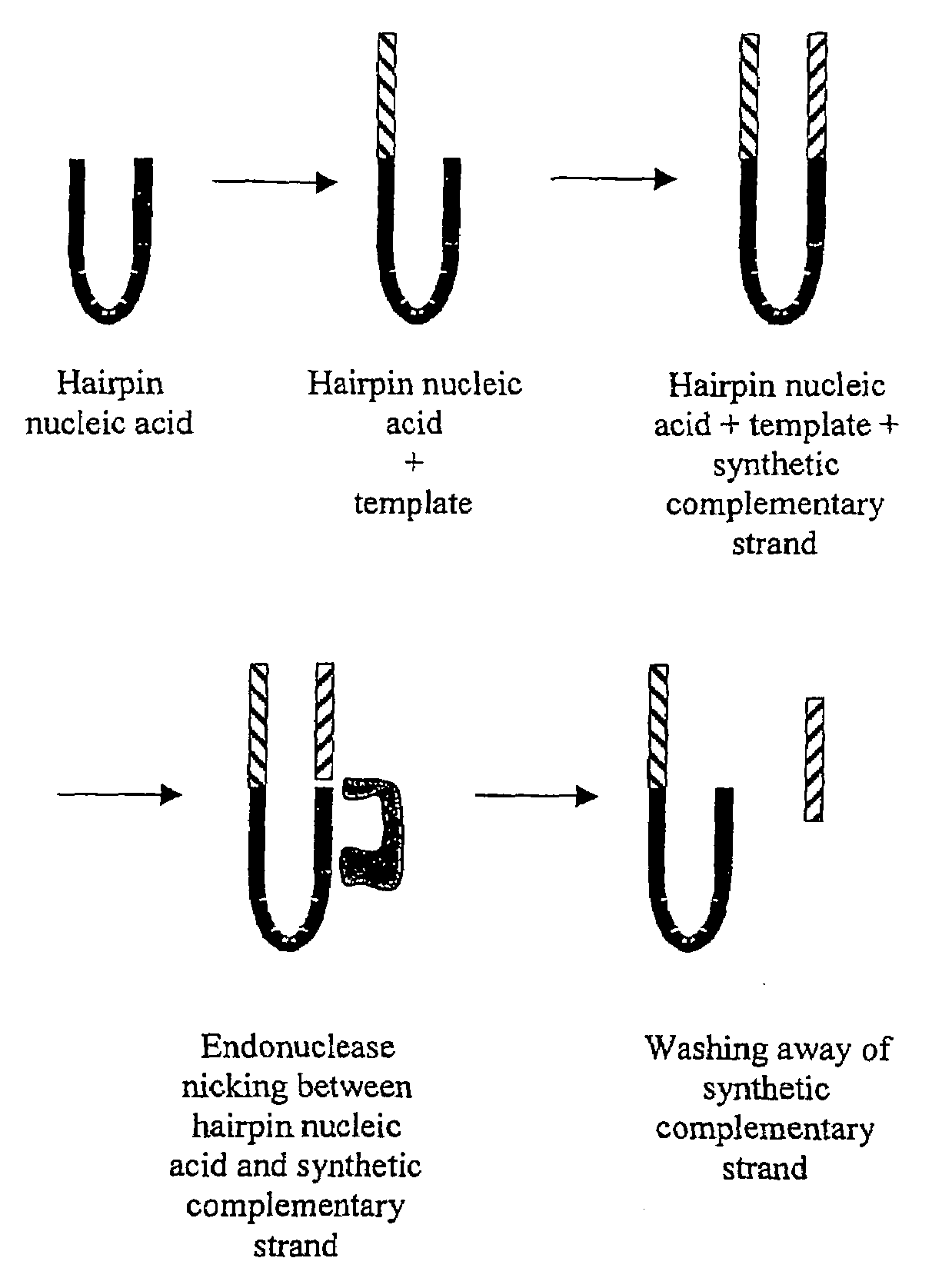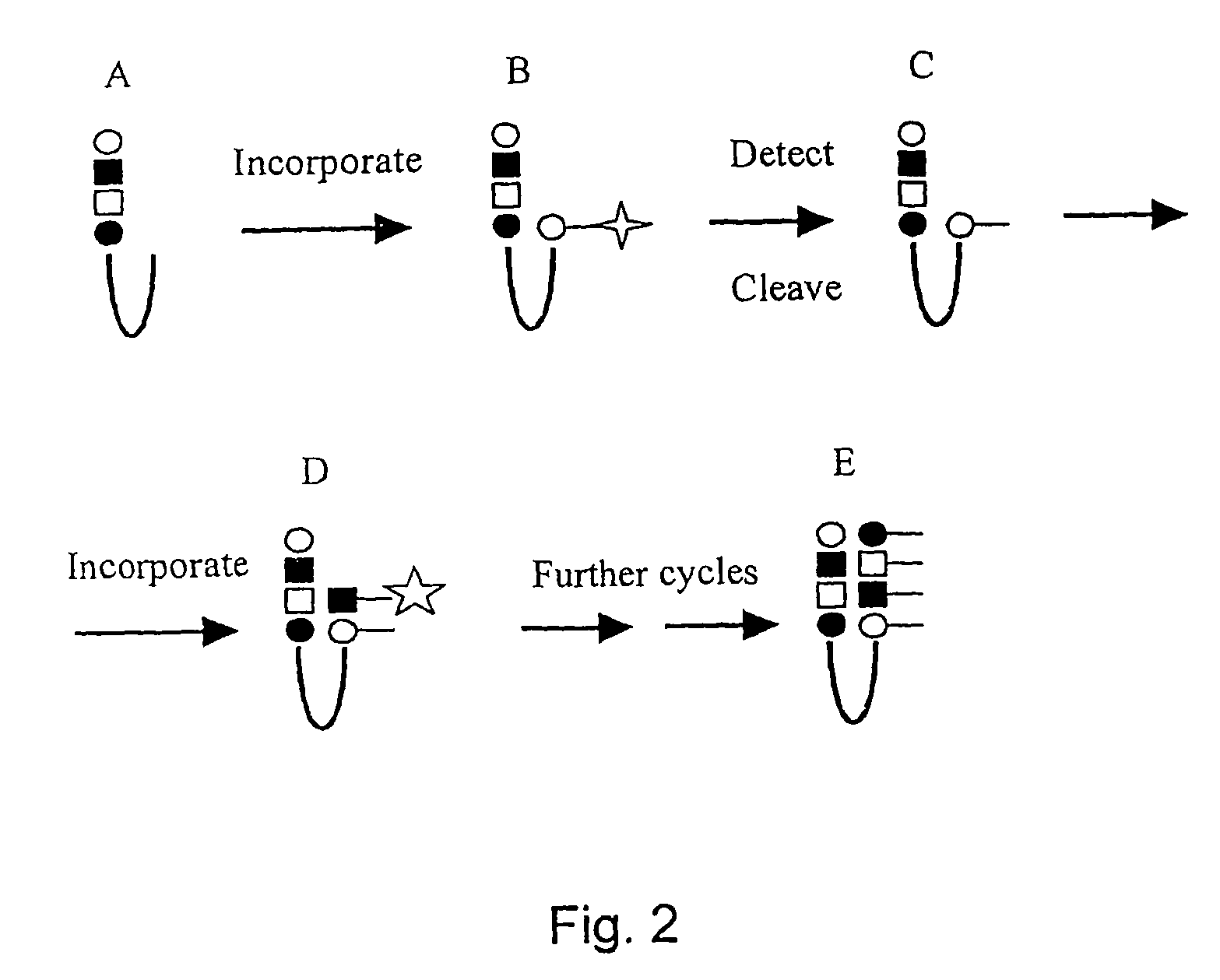Determination of methylation of nucleic acid sequences
a nucleic acid sequence and methylation technology, applied in the field of methylation of nucleic acid sequences, can solve the problems of limited methods, simple methods, and inability to give any information on the sequence context of methylation sites, and achieve the effect of perfect integrity of hairpins
- Summary
- Abstract
- Description
- Claims
- Application Information
AI Technical Summary
Benefits of technology
Problems solved by technology
Method used
Image
Examples
example 1
Regeneration of Hairpin
[0137]Twenty microliters of solution is prepared containing 50 pmoles of a DNA hairpin phosphorylated at its 5′ end, 10 pmoles of a non-phosphorylated DNA double-stranded oligonucleotide, and several thousand units of a DNA ligase enzyme. The oligonucleotide is designed such that one strand is shorter than the other, making the oligonucleotide blunt-ended at one end and single stranded at the other, a 5′ end. The single-stranded end carries a fluorescent label. The action of the ligase enzyme fuses the hairpin and the double-stranded oligonucleotide at their blunt ends only, and because only the 5′ end of the hairpin carries a phosphate group, the reaction results in joining one strand to the hairpin—the longer strand that carries the fluorescent group.
[0138]The template is regenerated by taking a solution containing 2.5 pmoles of a fluorescently labeled strand of DNA that has been previously ligated to a blunt DNA hairpin. The single-stranded portion of this ...
example 2
Bisulfite Reaction
[0140]In general, the DNA is rendered single-stranded by taking a 20 μl solution of 2-10 μ / g of genomic DNA fragments and adding 0.3M NaOH and incubating at room temperature for 15 minutes. 150 μl of 0.6 M hydroquinone containing 3.5 M sodium bisulfite (pH 5) is then added, and the mixture incubated for 10 hours at 50° C. The reaction is then purified using a DNA purification kit (Qiagen, Hilden, Germany).
[0141]When performing the bisulfite reaction on DNA on an array, prior denaturation of the DNA is not required. The DNA will be single stranded and attached to a hairpin nucleic acid or a double-stranded nucleic acid anchor on a surface. The DNA will have been rendered single-stranded after a sequencing reaction by the action of a nicking endonuclease that cleaves the sequencing strand away from the immobilised template strand. Thus, a 150 μl solution of 0.6 M hydroquinone containing 3.5 M sodium bisulfite (pH 5) is injected onto the array, and the array is then i...
PUM
| Property | Measurement | Unit |
|---|---|---|
| distance | aaaaa | aaaaa |
| distance | aaaaa | aaaaa |
| distance | aaaaa | aaaaa |
Abstract
Description
Claims
Application Information
 Login to View More
Login to View More - R&D
- Intellectual Property
- Life Sciences
- Materials
- Tech Scout
- Unparalleled Data Quality
- Higher Quality Content
- 60% Fewer Hallucinations
Browse by: Latest US Patents, China's latest patents, Technical Efficacy Thesaurus, Application Domain, Technology Topic, Popular Technical Reports.
© 2025 PatSnap. All rights reserved.Legal|Privacy policy|Modern Slavery Act Transparency Statement|Sitemap|About US| Contact US: help@patsnap.com



